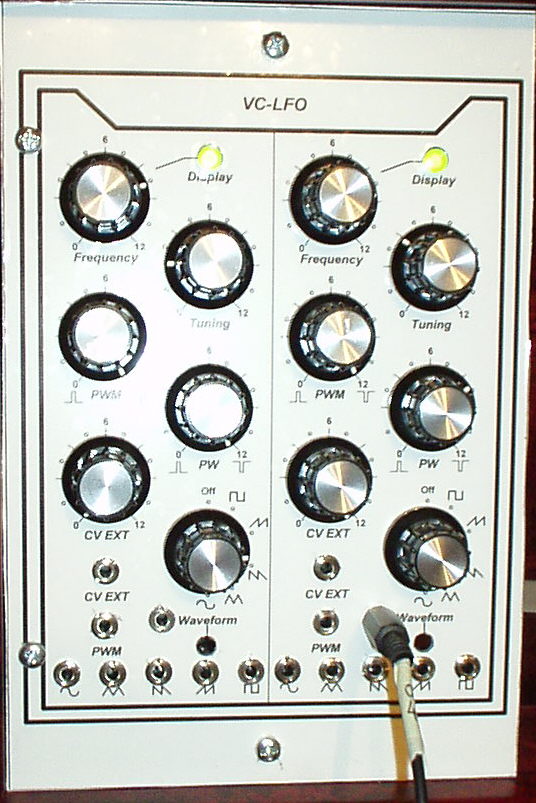
The course of the triangle voltage is visualized by a LED. The output frequency can be tuned via the 'Frequency' and 'Tuning' pots.
The pulse width of the square wave can be changed manually by the 'PW' pot and can be modulated by the adjustable 'PWM' input, which causes interesting 'stakkato' effects which can be found on several Tomita records.
The output frequency can also be modulated by an adjustable CV input which makes a kind of speed-up effect.
All waveforms can be accessed by output jacks in parallel and can be put on a separate output via a selector.
Schematic:
The schema is part of the book "Formant Pro MSS 2000" by H.J. Helmstedt. The voltage control of the LFO and the puls width modulation comes from the original Formant and from the MSS2000 VCO.
Sound example:
VC-LFO 1: Let the fiddle cry. A LFO sinus modulates a triangle sound via VCF. The LFO sine itself fades in after a certain duration of the triangle sound controled by an ADSR / VCA combination.
VC-LFO 2: A LFO square modulates a VCF. The pulse width of the LFO square is manipulated by an ADSR.
Reproduction hints:
The output voltage of 2.5 Vss seems to be insufficient for controlling a VCA, so I increased it to 5 Vss by changing the loopback resistors of the opamp stages.
The frequency spectrum was too low for my association of LFO modulation, so I decreased the cap in the triangle circuit from 1µF to 100nF.
The base resistor of the transistor in the sawtooth conversion circuit had to be increased from 47k to 220k to avoid the deviation of the ramp tops.